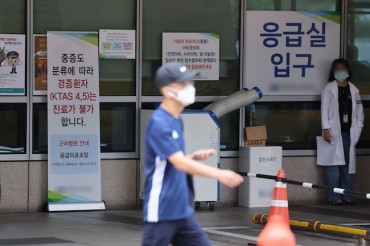
Though the rate has dropped 16.8 percent from the 2010 figure, which was 34.1 per 100,000 individuals, South Korea followed close behind Sri Lanka, Lithuania, and Guyana at the top of the list, making it one of the few high-income countries with a high suicide rate. (Image: Kobiz Media)
SEOUL, May 19 (Korea Bizwire) – Despite a modest improvement over the past five years, South Korea still remains among the countries with the highest suicide rates in the world, a new WHO report has revealed.
The South Korean suicide rate is 28.4 per 100,000 individuals, ranking fourth among 183 countries surveyed in the 2017 World Health Statistics report.
Though the rate has dropped 16.8 percent from the 2010 figure, which was 34.1 per 100,000 individuals, South Korea followed close behind Sri Lanka, Lithuania, and Guyana at the top of the list, making it one of the few high-income countries with a high suicide rate.
In 2000, the suicide rate was 14.8 per 100,000, then it drastically increased, peaking at 34.1 in 2010 before beginning a gradual decline.
The World Health Organization (WHO) said the recent drop in South Korea’s suicide rate was affected by a ban on sales of high-toxicity pesticides.
In South Korea, the intentional ingestion of pesticides as a means of committing suicide has been reported numerous times in the past, and the figures from the latest WHO report show restricting common suicide methods can prevent people from killing themselves.
The WHO report highlighted the correlation between access to deadly pesticides and suicide rates using a number of reports that support the claim.
In 1972, Samoa experienced a drastic increase in mortality rates soon after the high-toxicity pesticide paraquat went on sale. When paraquat was banned in 1981, the mortality rate in the country dropped.
From 2006 to 2010, drinking poison was one of the most common methods of committing suicide in South Korea, accounting for one in ten cases. However, when the sale of paraquat was criminalized in 2012, the country experienced an overall suicide rate drop across the gender, age and location spectrum, according to the WHO.
South Korea is setting an example of how to tackle suicide for countries that are struggling with a high suicide rate, the WHO said.
Since 2005, the WHO has been releasing the World Health Statistics report every year to analyze the life expectancy, mortality rate, and health care services of 194 member countries to help achieve goals in the health sector.
Hyunsu Yim (hyunsu@koreabizwire.com)






